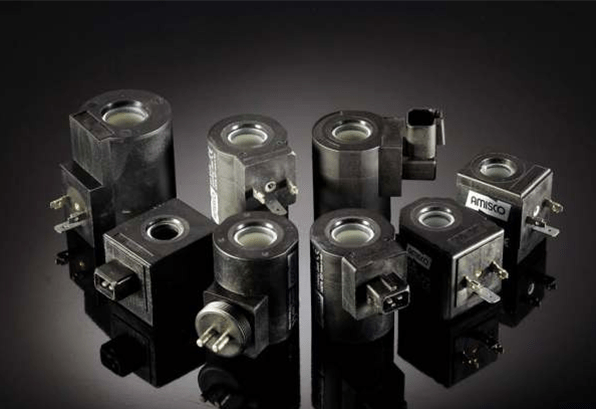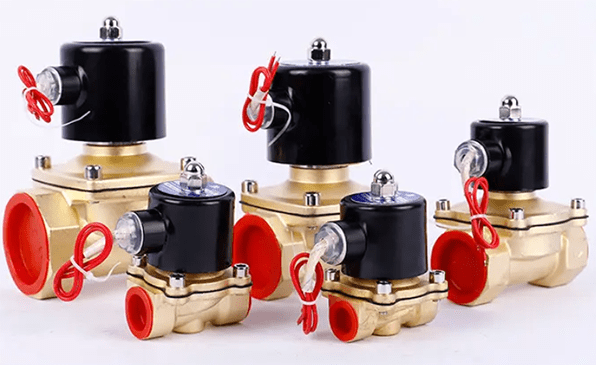
As an electric control component, solenoid valves are widely used in many equipment such as robotic arms, CNC machine tools, and water heaters. In the process of using solenoid valves, some users will encounter some problems, such as solenoid valve coil overheating. Why does this happen?
When the solenoid valve is working, it will be found that the solenoid valve coil heats up. Generally, the cause is that the solenoid valve works for a long time. However, as long as the rising temperature is within the allowable temperature range of the solenoid valve coil, it will not affect the normal operation of the solenoid valve. However, if the working temperature is too high, it will affect the working efficiency of the solenoid valve and even damage the solenoid valve parts.
Let's analyze in detail the influence of the solenoid valve coil temperature being too high, the possible causes and solutions for the solenoid valve coil overheating.
1. Influence of Solenoid Valve Coil Overheating
1. When the temperature of the solenoid valve coil is too high, its insulating material will become brittle or even melt, which will cause the internal operation of the solenoid valve to be abnormal and the fluid control task not to be completed.
2. When the solenoid valve works for too long or the external temperature is too high, and the accumulated heat cannot be effectively dissipated, the internal temperature of the solenoid valve will continue to rise. Once the temperature exceeds the normal temperature range designed for the solenoid valve, the coil is easily burned.

2. Causes and Solutions for Solenoid Valve Coil Overheating
When you find that the solenoid valve is heating up, first check whether the temperature of the solenoid valve coil is within the allowable temperature range. Please refer to the manual of the solenoid valve product. Generally, there are specific instructions for the working and ambient temperature of the solenoid valve in the manual. If you do not have a manual, you can consult the manufacturer according to the product model.
Generally, it is a normal phenomenon that a solenoid valve heats up slightly when working. As long as the rising temperature does not exceed a certain temperature, it is safe and users can rest assured.
Detailed causes and troubleshooting methods for solenoid valve coil overheating are as follows:
2.1 Improper Selection
The improper selection of the solenoid valve will cause the solenoid valve coil overheating. Solenoid valve products are available in two types: normally open and normally closed. If the user chooses a normally closed solenoid valve, but the actual working requires the normally open type, it is easy to cause the solenoid valve coil to overheat. And if this is the reason, you can only replace the improper solenoid valve with a new one, so selecting the correct model is very important.

2.2 Coil Problem
Large resistance of solenoid valve coil
Large resistance of solenoid valve coil is one of the main reasons for solenoid valve coil heating up. It will cause a lot of heat to be generated when the solenoid valve is working. Generally speaking, there are many reasons for large coil resistance, such as poor quality of coil material, too many turns of coil, aging of coil, etc.
You can replace the coil with one of better material quality, so that the resistance of the coil will be smaller, thereby reducing the possibility of coil overheating. When performing product maintenance, you should replace the aging solenoid coil in time.
Poor insulation of solenoid valve coil
Poor insulation of solenoid valve coil is also an important reason for solenoid valve coil heating up. It will cause electrical contact between the coil and external environment, making the coil more vulnerable to damage.
When repairing the solenoid valve, you can strengthen the insulation of the coil, so as to avoid electrical contact between the coil and external environment and reduce the risk of coil heating up.
2.3 Powered on for Too Long
Solenoid valve coil is powered on for too long, which is also a factor for solenoid valve coil heating up. Generally speaking, if the solenoid valve is powered on for more than 5 minutes, the coil will generate a lot of heat, which will cause the internal temperature of the coil to rise, causing the solenoid valve coil to heat up.
By controlling the length of time the solenoid valve is powered on, the coil can be prevented from generating a lot of heat due to long power-on time, which in turn causes the problem of coil heating up. Or reduce the temperature of the coil by air cooling and other methods.

2.4 Excessive Current
The heating up of the solenoid valve coil is mainly related to the current. If the current is too large, the coil will heat up or overheat. The reasons for the excessive current may be the selection of a power supply with a voltage level that does not meet the requirements or a fault in the external circuit. Therefore, checking the power supply and external circuit is the key to solving this problem.
2.5 Power Supply Voltage Fluctuation
The voltage fluctuation of the power supply may cause the coil current to increase and cause the coil to overheat.
Solutions:
1. Stable power supply: Use a voltage stabilizer to ensure the stability of the power supply voltage and avoid the impact of voltage fluctuations on the coil.
2. Install protection device: Install an overheating protection device, which automatically cuts off the power when the coil temperature is too high to prevent overheating damage.

2.6 Too High Ambient Temperature
During the use of the solenoid valve, its coil temperature is affected by the external ambient temperature. When the ambient temperature is too high, the solenoid valve coil will overheat.
Solution:
You can add heat dissipation components such as heat sinks and fans around the solenoid valve to accelerate the dissipation of heat and reduce the heat accumulation of the solenoid valve coil.
2.7 Failure of the Energy-Saving Protection Module
If the solenoid valve coil is equipped with an energy-saving protection module (the function of the energy-saving module is to save energy and cool the solenoid valve coil), and this energy-saving protection module fails, it will also cause the coil to heat up. At this time, the relevant damaged parts need to be replaced in time.
The above is an introduction to the causes and solutions of overheating of the solenoid valve coil. In actual use of solenoid valves, users need to pay attention to regularly check the working status of them and eliminate problems in time, so as to extend their service life and improve the working efficiency of the related equipment.


